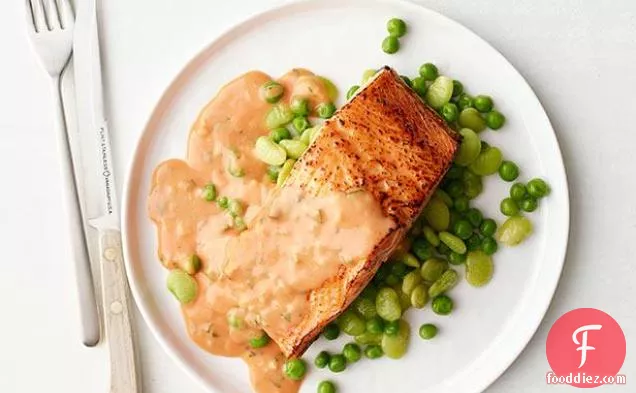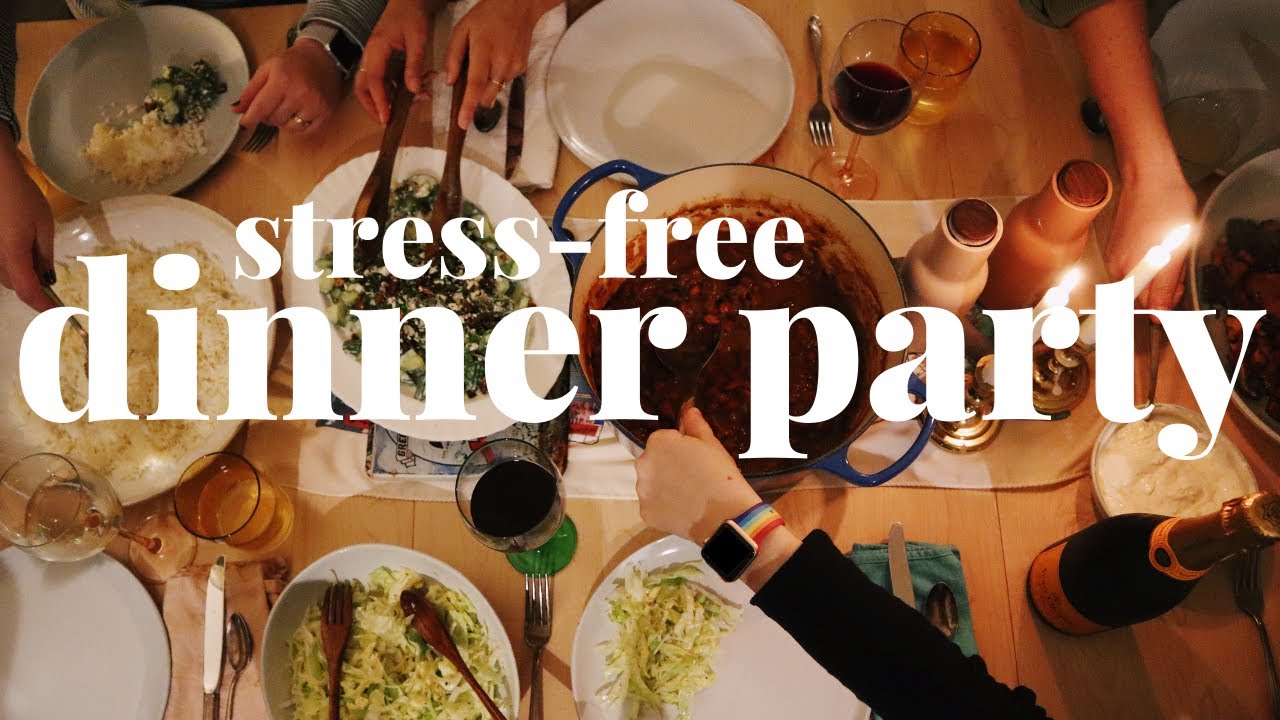Broiled Salmon With Tomato Cream Sauce

You can never have too many main course recipes, so give Broiled Salmon With Tomato Cream Sauce If you have kosher salt and pepper, tomato paste, butter, and a few other ingredients on hand, you can make it.
Instructions
2
Combine the lima beans and 1 cup water in a medium saucepan over medium heat; bring to a simmer, then cover and cook until almost tender, about 7 minutes.
Ingredients you will need![Lima Beans]() Lima Beans
Lima Beans![Water]() Water
Water
Equipment you will use![Sauce Pan]() Sauce Pan
Sauce Pan
3
Add the peas, 1/4 teaspoon salt, and pepper to taste; cover and cook until the peas and beans are tender, about 5 more minutes.
Ingredients you will need![Pepper]() Pepper
Pepper![Beans]() Beans
Beans![Peas]() Peas
Peas![Salt]() Salt
Salt
5
Add 1 tablespoon butter and the parsley; stir to coat. Meanwhile, put the salmon skin-side down on a baking sheet lined with foil; season lightly with salt and pepper. Broil until browned on top, 6 to 8 minutes.
Ingredients you will need![Salt And Pepper]() Salt And Pepper
Salt And Pepper![Parsley]() Parsley
Parsley![Butter]() Butter
Butter![Salmon]() Salmon
Salmon
Equipment you will use![Baking Sheet]() Baking Sheet
Baking Sheet![Aluminum Foil]() Aluminum Foil
Aluminum Foil
6
Heat the remaining 1 tablespoon butter in another saucepan over medium heat; add the shallot and cook until translucent, about 2 minutes.
Ingredients you will need![Shallot]() Shallot
Shallot![Butter]() Butter
Butter
Equipment you will use![Sauce Pan]() Sauce Pan
Sauce Pan
Ingredients
1Tbsp![chopped fresh parsley]() chopped fresh parsley1Tbsp
chopped fresh parsley1Tbsp![chopped fresh tarragon, parsley or dill]() chopped fresh tarragon, parsley or dill59milliliters
chopped fresh tarragon, parsley or dill59milliliters![heavy cream]() heavy cream4servings
heavy cream4servings![Kosher salt and freshly ground pepper]() Kosher salt and freshly ground pepper355milliliters
Kosher salt and freshly ground pepper355milliliters![frozen lima beans]() frozen lima beans355milliliters
frozen lima beans355milliliters![frozen peas]() frozen peas680grams
frozen peas680grams![center-cut salmon fillets (preferably wild)]() center-cut salmon fillets (preferably wild)1medium
center-cut salmon fillets (preferably wild)1medium![shallot, minced]() shallot, minced2Tbsps
shallot, minced2Tbsps![tomato paste]() tomato paste2Tbsps
tomato paste2Tbsps![unsalted butter]() unsalted butter2Tbsps
unsalted butter2Tbsps![white wine vinegar]() white wine vinegar
white wine vinegar
 chopped fresh parsley1Tbsp
chopped fresh parsley1Tbsp chopped fresh tarragon, parsley or dill59milliliters
chopped fresh tarragon, parsley or dill59milliliters heavy cream4servings
heavy cream4servings Kosher salt and freshly ground pepper355milliliters
Kosher salt and freshly ground pepper355milliliters frozen lima beans355milliliters
frozen lima beans355milliliters frozen peas680grams
frozen peas680grams center-cut salmon fillets (preferably wild)1medium
center-cut salmon fillets (preferably wild)1medium shallot, minced2Tbsps
shallot, minced2Tbsps tomato paste2Tbsps
tomato paste2Tbsps unsalted butter2Tbsps
unsalted butter2Tbsps.webp) white wine vinegar
white wine vinegarRecommended wine: Chardonnay, Pinot Noir, Sauvignon Blanc
Salmon works really well with Chardonnay, Pinot Noir, and Sauvignon Blanc. To decide on white or red, you should consider your seasoning and sauces. Chardonnay is a great friend to buttery, creamy dishes, while sauvignon blanc can complement herb or citrus-centric dishes. A light-bodied, low-tannin red such as the pinot noir goes great with broiled or grilled salmon. The Tyler Winery Santa Barbara County Chardonnay with a 4.1 out of 5 star rating seems like a good match. It costs about 30 dollars per bottle.

Tyler Winery Santa Barbara County Chardonnay
2015 brought the earliest vintage of the decade so far. After the large 2013 and 2014 vintages and the continued drought, the vines put forth a fraction of the fruit than the previous two years. They were down approximately 30% overall but the result was exceptional quality and deep, powerful wines with great acidity. Citrus, anise, saline, and energetic.DifficultyMedium
Ready In30 m.
Servings4
Health Score53
Related recipes
Turkey with Country Ham Stuffing
Party Italian Wedding Soup
Turkey Alfredo Tetrazzini
Stuffed Shells with Meat Sauce
Magazine

Your Inner Chef with Taylor Swift's Top 3 Recipes from Her Beloved NYC Hangout

20 Mouthwatering Recipes You Need to Try Today!

Master the Art of Making Perfect Pancakes with This Foolproof Recipe

The Science Behind Red Wine: Its Surprising Health Benefits and Potential Risks

12 Wine Cocktails for a Sophisticated Twist

Sip, Swirl, and Celebrate: Toasting to National Wine Day on May 25th

National Drink Wine Day on February 18

Celebrating Souffle Day with Delectable Delights

Indulge in the Delightful Flavor of Oyster Soup on Its Special Day!

Celebrating World Nutella Day

Your Inner Chef with Taylor Swift's Top 3 Recipes from Her Beloved NYC Hangout

20 Mouthwatering Recipes You Need to Try Today!

Sip, Swirl, and Celebrate: Toasting to National Wine Day on May 25th

National Drink Wine Day on February 18

Indulge in the Delightful Flavor of Oyster Soup on Its Special Day!

These Super Recipes for Your Football Party!

The Secrets Behind 3 Classic Comfort Food Recipes

Recipes to Spice Up Your February Menu

Top 20+ Must-Try Recipes Dominating February 2024















